Karl D Sims
age ~63
from Cambridge, MA
- Also known as:
-
- Karl P Sims
- Karl P Simms
- Carl Sims
- Kall Sims
- Sims Kall
- Phone and address:
-
7 Lowell St, Cambridge, MA 02138
6174923161
Karl Sims Phones & Addresses
- 7 Lowell St, Cambridge, MA 02138 • 6174923161
- 8 Clinton St, Cambridge, MA 02139 • 6174923161
- Eastham, MA
- Somerville, MA
- Camden, ME
- Santa Monica, CA
Us Patents
-
Video Field Artifact Removal
view source -
US Patent:6734916, May 11, 2004
-
Filed:Oct 4, 2000
-
Appl. No.:09/679162
-
Inventors:Karl Sims - Cambridge MA 02139
-
International Classification:H04N 701
-
US Classification:348452, 348451
-
Abstract:Portions that identify motion are identified in an original frame of interlaced video fields. A de-interlaced version of the frame is generated. The original frame and the de-interlaced frame are combined to form a resulting frame, the resulting frame including portions from the original frame that represent relatively less motion and portions from the de-interlaced version that represent relatively more motion.
-
Sharing Of Presets For Visual Effects Or Other Computer-Implemented Effects
view source -
US Patent:8412729, Apr 2, 2013
-
Filed:Apr 22, 2010
-
Appl. No.:12/765541
-
Inventors:Karl P. Sims - Cambridge MA, US
Gary C. Oberbrunner - Somerville MA, US
Katherine Hays - Boston MA, US -
Assignee:GenArts, Inc. - Cambridge MA
-
International Classification:G06F 17/30
-
US Classification:707769, 707781
-
Abstract:This application describes a system and associated methods for enabling users of video editing, compositing, motion graphics, and other applications to easily store and retrieve presets, have presets modified for compatibility with other applications, share presets with each other, and search for shared presets. The users may utilize different applications that store presets according to different application-specific schemas. The system can automatically translate or conform presets from one application-specific schema to a neutral schema and from the neutral schema to another application-specific schema. This allows a user of one application to share his or her presets with users of different applications. Among other things, this cross-application sharing of presets allows the system implementor to create one user community (e. g. , of users of different applications), rather than several individual ones (e. g.
-
Filters And Functions Using Exponential Decay
view source -
US Patent:20140050415, Feb 20, 2014
-
Filed:Jul 23, 2013
-
Appl. No.:13/948789
-
Inventors:Karl P. Sims - Cambridge MA, US
-
International Classification:G06T 5/00
G06F 7/556 -
US Classification:382260, 708277
-
Abstract:The technology described in this document relates to filters and functions that are based on exponential decay functions. In one aspect, the technology is embodied in a method that includes using a computing device to compute a first function as a combination of (i) an exponential decay function, a decay factor for which is chosen based on a Gaussian function, and (ii) at least a second function that is obtained by one or more convolution operations on the decay function. The first function provides an approximation of at least a portion of the Gaussian function.
-
Random Array Sensing Devices
view source -
US Patent:45743118, Mar 4, 1986
-
Filed:Apr 4, 1985
-
Appl. No.:6/720017
-
Inventors:Howard L. Resnikoff - Boston MA
Tomaso Poggio - Wellesley MA
Karl Sims - Boston MA -
Assignee:Thinking Machines Corporation - Cambridge MA
-
International Classification:H04N 522
-
US Classification:358213
-
Abstract:A sensing device for generating an output signal corresponding to an input signal which comprises a substrate, an array of sensor elements for receiving the input signal and transfer members located on the surface of the substrate and interposed between the sensor elements. The sensor elements have their barycenters distributed on the surface of the substrate in a random non-periodic pattern. The transfer members are coupled to the sensor elements and generate the output signal. The sensing device is incorporated in an apparatus which generates an output signal from an input image wherein the output signal is substantially free of detectable aliases. The apparatus includes an image pick-up device for viewing the input image and transmitting radiation to the image sensing device, an analog-to-digital converter for converting the analog signal from a sensing device to a digital signal, a position encoder, an interpolator and a memory means for storing the output of the interpolator. The position encoder is provided with a plurality of storage addresses for storing digital signals each having a value corresponding to the intensity of the radiation incident on a corresponding sensor element, and the interpolator generates a plurality of signals corresponding to intensity values intermediate to those stored in the storage addresses of the position encoder.
-
Virtual Processor Techniques In A Simd Multiprocessor Array
view source -
US Patent:48274038, May 2, 1989
-
Filed:Nov 24, 1986
-
Appl. No.:6/933810
-
Inventors:Guy L. Steele - Lexington MA
W. Daniel Hillis - Brookline MA
Guy Blelloch - Cambridge MA
Michael Drumbeller - Belmont MA
Brewster Kahle - Somerville MA
Clifford Lasser - Boston MA
Abhiram Ranade - New Haven CT
James Salem - Waltham MA
Karl Sims - Somerville MA -
Assignee:Thinking Machines Corporation - Cambridge MA
-
International Classification:G06F 1516
-
US Classification:364200
-
Abstract:A virtual processor mechanism and specific techniques and instructions for utilizing such virtual processor mechanism within an SIMD computer having numerous processors, and each physical processor having dedicated memory associated therewith. Each physical processor is used to simulate multiple "virtual" processors, with each physical processor simulating the same number of virtual processors. The memory of each physical processor is divided into n regions of equal size, each such region being allocated to one virtual processor, where n is the number of virtual processors simulated by each physical processor. Whenever an instruction is processed, each physical processor is time-sliced among the virtual memory regions, performing the operation first as one virtual processor, then another, until the operation has been performed for all virtual processors. Physical processors are switched among the virtual processors in a completely regular, predictable, deterministic fashion. The virtual processor mechanism switches among virtual processors within instructions, so that at the completion of each instruction, it has been executed on behalf of all virtual processors.
-
Method Of Simulating Additional Processors In A Simd Parallel Processor Array
view source -
US Patent:47730382, Sep 20, 1988
-
Filed:Feb 24, 1986
-
Appl. No.:6/832913
-
Inventors:W. Daniel Hillis - Cambridge MA
Clifford Lasser - Boston MA
Brewster Kahle - Somerville MA
Karl Sims - Somerville MA -
Assignee:Thinking Machines Corporation - Cambridge MA
-
International Classification:G06F 900
-
US Classification:364900
-
Abstract:A method is described for simulating additional processors in a SIMD computer by dividing the memory associated with each processor into a plurality of sub-memories and then operating on each sub-memory in succession as if it were associated with a separate processor. Thus, a first instruction or set of instructions is applied to all the processors of the array to cause at least some processors to process data stored at a first location or locations in the first sub-memory. Thereafter, the same first instruction or set of instructions is applied to all the processors of the array to cause at least some processors to process data stored at the same first location in a second sub-memory. And so forth for each of the sub-memories. By operating a SIMD computer in this fashion, it is possible in effect to vary the number of processors in the array so as to provide the number of processors required for a problem.
-
System And Method For Creating And Evolving Directed Graphs
view source -
US Patent:55111580, Apr 23, 1996
-
Filed:Aug 4, 1994
-
Appl. No.:8/286149
-
Inventors:Karl P. Sims - Somerville MA
-
Assignee:Thinking Machines Corporation - Bedford MA
-
International Classification:G06T 1700
-
US Classification:395140
-
Abstract:A system processes directed graphs, each directed graph comprising a plurality of nodes interconnected by arrows defining a relationship among the nodes, each node defining a selected attribute. The system comprises an initial population means, a subsequent generation population generating means, and a competition simulation means. The initial population means provides an initial population of directed graphs that comprises an initial current generation during an initial iteration. The subsequent generation population generating means generates, in response to selected ones of the directed graphs in each of a plurality of current generations, modified directed graphs for use generation during a subsequent iteration. The competition simulation means performs a processing operation in connection with attributes of the nodes of the graphs to simulate a competition among the current generation of directed graphs in connection with a selected goal, to develop the ranking information for use by the subsequent generation population generating means. The operations of the initial population means, the subsequent generation population generating means and the competition simulation means are controlled through a series of iterations.
-
Computer System And Method For Generating And Mutating Objects By Iterative Evolution
view source -
US Patent:60885106, Jul 11, 2000
-
Filed:May 2, 1994
-
Appl. No.:8/237982
-
Inventors:Karl P. Sims - Somerville MA
-
Assignee:Thinking Machines Corporation - Bedford MA
-
International Classification:G06F 1518
-
US Classification:395 13
-
Abstract:A computer object processing system for, during selected iterations, generating an object, such as an expression defining an image. During an initial iteration, a predetermined number of seed objects are generated, each seed object defining an object for the initial iteration. During each successive iteration, a predetermined number of mutated objects are generated (i) in response to an operator selected one of the seed objects during the initial iteration and (ii) in response to a an operator selected object during each iteration after the initial iteration. During each iteration one of the seed objects or one of the mutated objects is selected for use in generating a mutated object during a subsequent iteration.
Name / Title
Company / Classification
Phones & Addresses
Principal
Sims/Maes Foundation
Civic/Social Association
Civic/Social Association
8 Clinton St, Cambridge, MA 02139
President
GENARTS, INC
955 Massachusetts Ave, Cambridge, MA 02139
Resumes

Karl Sims
view sourceLocation:
139 Deer Lake Rd, Huffman, TX 77336
Industry:
Computer Software
Work:
Museum of Science, Boston 2016 - 2017
Interactive Exhibit Designer and Developer
Genarts, Inc. 2009 - 2016
Founder and Board Member
Shady Hill School 2011 - 2014
Board Member
Genarts, Inc. 1996 - 2008
Founder and Chief Executive Officer
Thinking Machines Corporation 1990 - 1994
Artist In Residence
Interactive Exhibit Designer and Developer
Genarts, Inc. 2009 - 2016
Founder and Board Member
Shady Hill School 2011 - 2014
Board Member
Genarts, Inc. 1996 - 2008
Founder and Chief Executive Officer
Thinking Machines Corporation 1990 - 1994
Artist In Residence
Education:
Massachusetts Institute of Technology 1980 - 1987
Massachusetts Institute of Technology 1980 - 1984
Bachelors
Massachusetts Institute of Technology 1980 - 1984
Bachelors
Skills:
Sims
Technology
Research
Education
Life Sciences
Software
Integration
Software Integration
Technology
Research
Education
Life Sciences
Software
Integration
Software Integration

Karl Sims
view source
Karl Sims
view sourceYoutube
Googleplus

Karl Sims

Karl Sims

Karl Sims
Flickr

Karl Sims
view source
Karl Sims
view source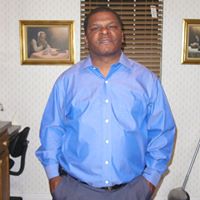
Karl Sims
view source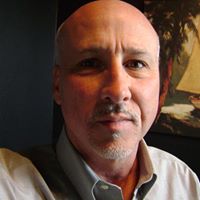
Karl Sims
view source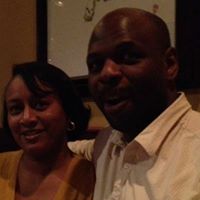
Karl Sims
view source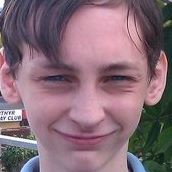
Joshua Karl Sims
view source
Karl Sims
view source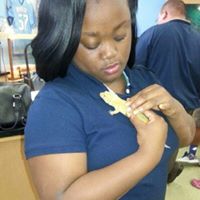
Karl Sims
view sourceMyspace
Classmates

Karl Sims, Gates County H...
view sourceGet Report for Karl D Sims from Cambridge, MA, age ~63













